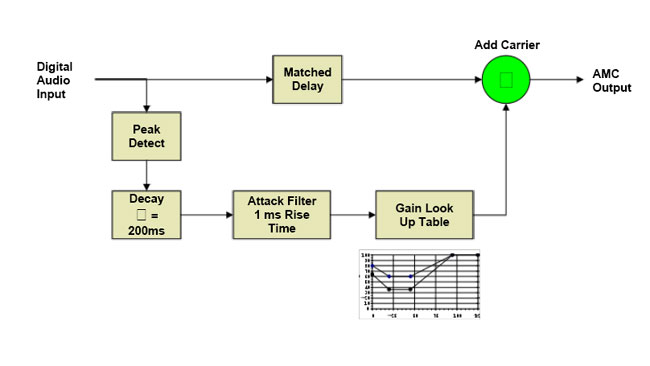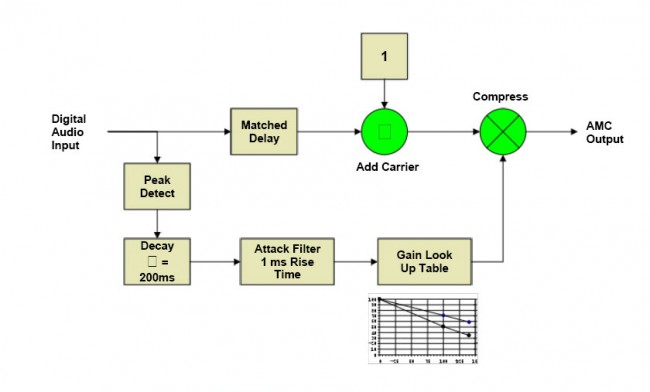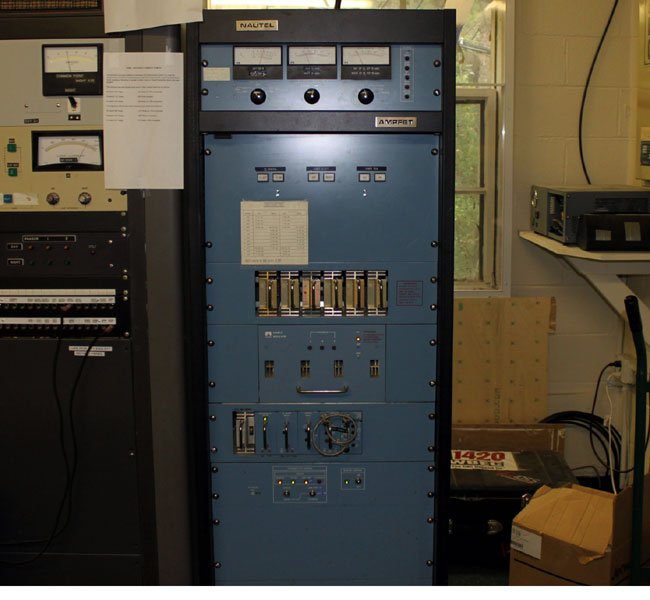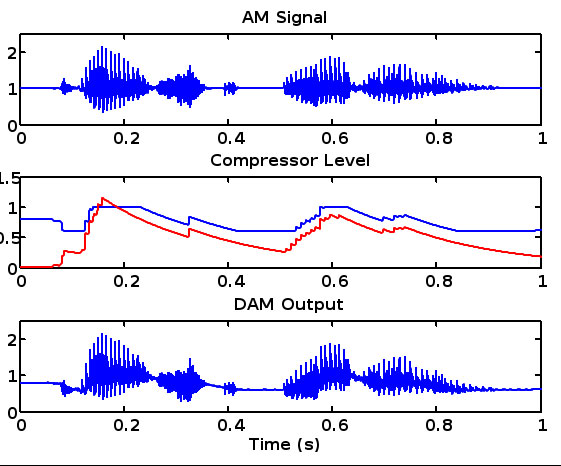Still in use as the main transmitter after 42 years at WCKL 560 KHz, Catskill, NY.
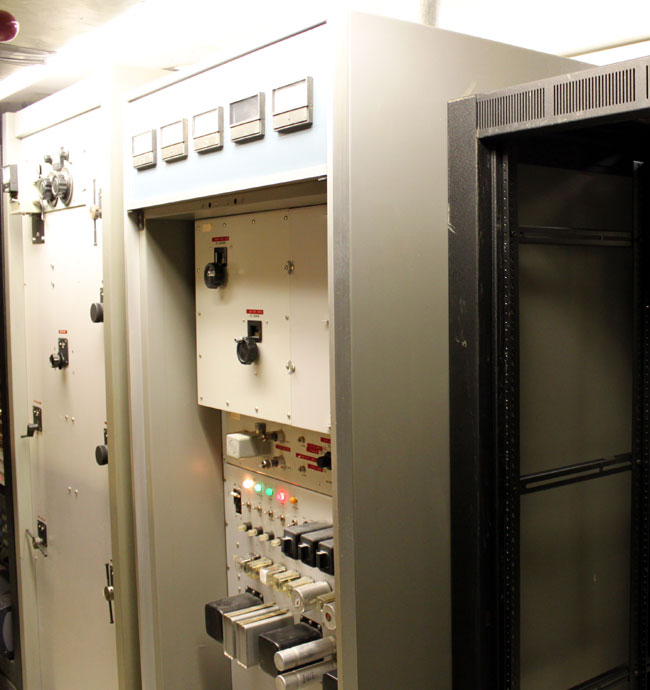
The last seven years or so, it has not had much use, the station being caught in some strange LMA with Clear Channel, then sold to the Black United Fund of NY something or another. They basically had it dark, turning it on for a few days each year to as not to lose their license. Finally, they LMA’d it to Family Broadcasting (not to be confused with Family Radio). There are rumors of a sale, but it remains to be seen.
They have been broadcasting an eclectic, free-form programming style which appears to be the work of mostly volunteers.
The station was first licensed in 1970, thus this is the original transmitter:
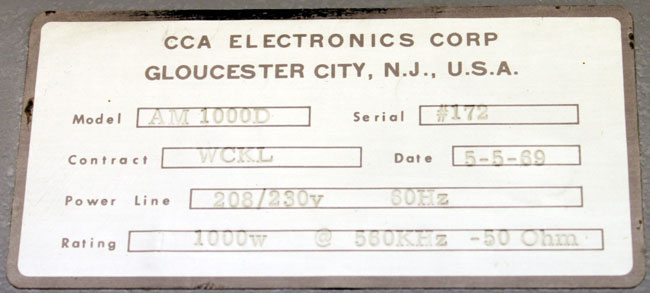
Towers are 446 feet tall, which works out to 90 degrees at 560 KHz.
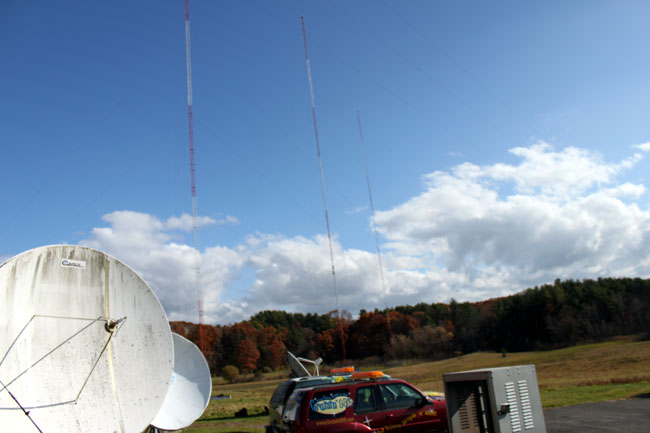
The station is licensed to Catskill, but the transmitter site is located in Hudson, across the river. With the current ownership situation in flux, I would characterize the operation as “tenuous.”
The transmitter itself is a pretty simple high level modulation tube type transmitter. It uses 4-400 tubes, like the RCA-BT1AR transmitters, and is built around a similar design, which makes sense as they were designed and built by former RCA engineers. One of the CCA principles, Bernie Wise, still makes Energy Onix transmitters about 10 miles away in Valatie, NY.
Parts are fairly generic and still available. Things like the modulation transformer may be harder to come by, however, Goodrich Electronics, Harbach Electronics, Energy Onix and others will be able to steer one in the right direction. I’d put up a schematic if I could find one.
I find these older tube-type transmitters often sing with modulation, especially the higher frequencies. That sound and the soft sound of the blower moving air is the sound of radio, at least to me.

